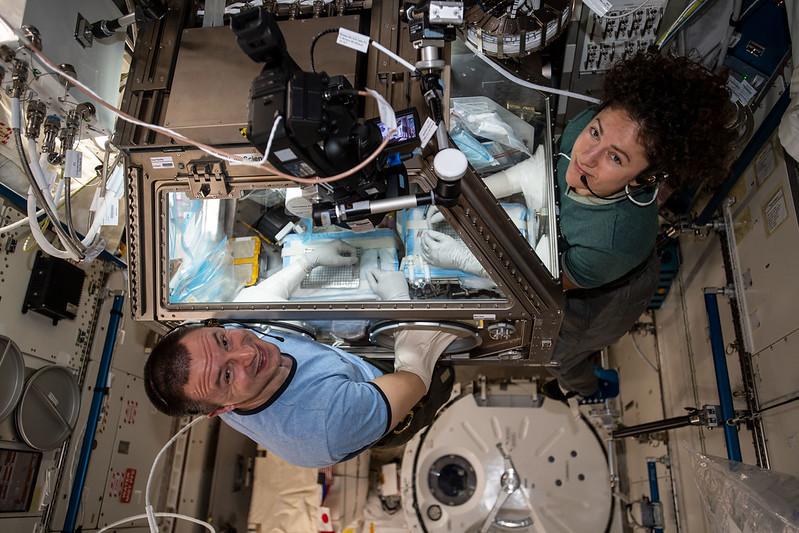After sending mice into space, researchers have discovered that blocking or removing certain proteins can prevent muscle and bone loss—findings that could potentially translate into new therapies for humans with various conditions back here on Earth.
Almost half of all American adults older than 50 are at risk of osteoporosis-related bone fractures, and many who do break a bone have to spend time on bed rest, which weakens the body even more. For many patients with other serious conditions—such as AIDS, cancer, muscular dystrophy, heart disease or sepsis—muscle loss is common and can even be fatal. All this fueled married scientists Emily Germain-Lee, M.D., and Se-Jin Lee, M.D., Ph.D., to conduct years of research into muscle and bone loss.
The researchers, along with teams from the University of Connecticut and the Jackson Laboratory, studied the phenomenon by launching mice into microgravity, as featured in International Space Station’s Upward. Microgravity is a near-weightless environment at the ISS’ National Laboratory where muscle and bone loss are accelerated. Some of the mice, dubbed “mighty mice,” were genetically engineered to delete myostatin, while other mice received a drug that blocked myostatin and activin A, both of which are involved in bone and muscle mass regulation.
“Going to space is the ultimate bed rest,” Lee, a physician and researcher at the Jackson Laboratory in Maine, told Upward.
Lee’s previous research and a Pfizer partnership led to the development of a therapeutic that binds to and blocks myostatin. While working on this research, Lee realized that myostatin works with activin A to regulate muscle and bone mass. Meanwhile, pediatric endocrinologist and University of Connecticut Professor Germain-Lee was studying mice to learn about osteogenesis imperfecta, a disease that presents at birth and causes bones to fracture easily. From her studies, Germain-Lee discovered that bone and muscle mass increased when myostatin and activin A were blocked in mice with osteogenesis imperfecta.

The married couple then combined forces, planning out an experiment that would test myostatin and activin A inhibition in microgravity. The investigation included 40 female mice, some of which received a drug blocking myostatin and activin A activity, some genetically mutated mighty mice without the myostatin gene and some normal mice.
While the mice were in an orbiting lab for 33 days, the researchers also ran a control group of the same types of mice on the ground.
During their space trip, the normal mice lost significant bone and muscle mass, a finding that parallels what is known about microgravity’s impact on humans. However, the mighty mice and mice with activin A and myostatin blockers responded differently.
“The mighty mice had extra muscle mass as a result of having a mutation in the myostatin gene and were able to retain most, if not all, of that extra muscle during spaceflight,” Lee said.
The mice with inhibited myostatin and activin A also didn’t lose muscle and bone mass while in microgravity. The treated mice actually gained mass in space, an increase similar to those found in the treated mice on the ground. Ultimately, the researchers learned that the space mice receiving treatment were protected from microgravity-induced bone and muscle loss.
Such findings mean that blocking myostatin and activin A improves muscle and bone mass, even when the mice aren’t able to bear weight, according to Lee. The scientist believes that targeting the pathway could help lots of patients with bone or muscle loss, particularly those who are older or bedridden.
“There is still a lot of work that needs to be done,” Germain-Lee said. “But we believe that this strategy holds promise and ultimately can improve the quality of life for many patients.”